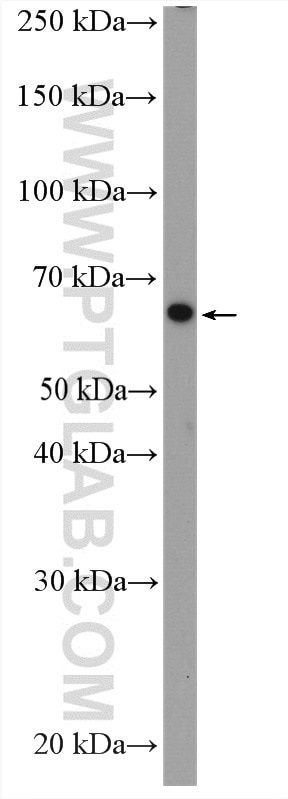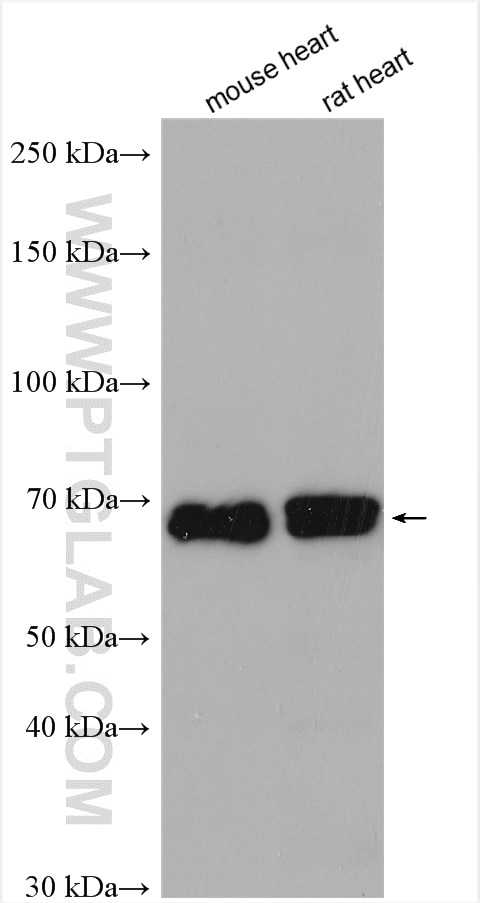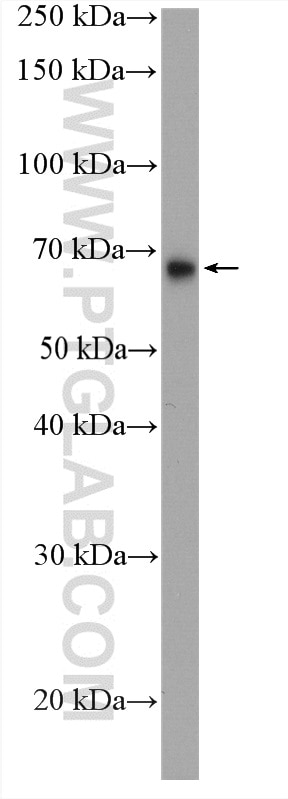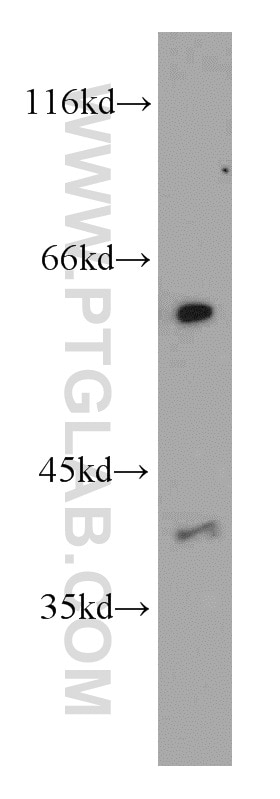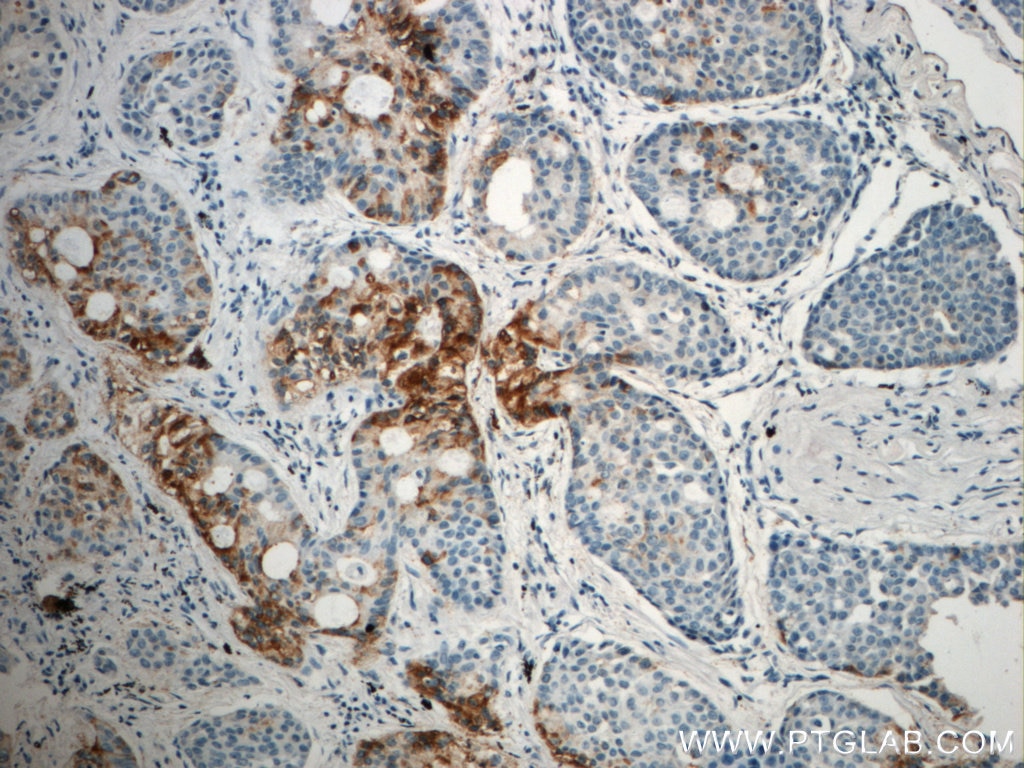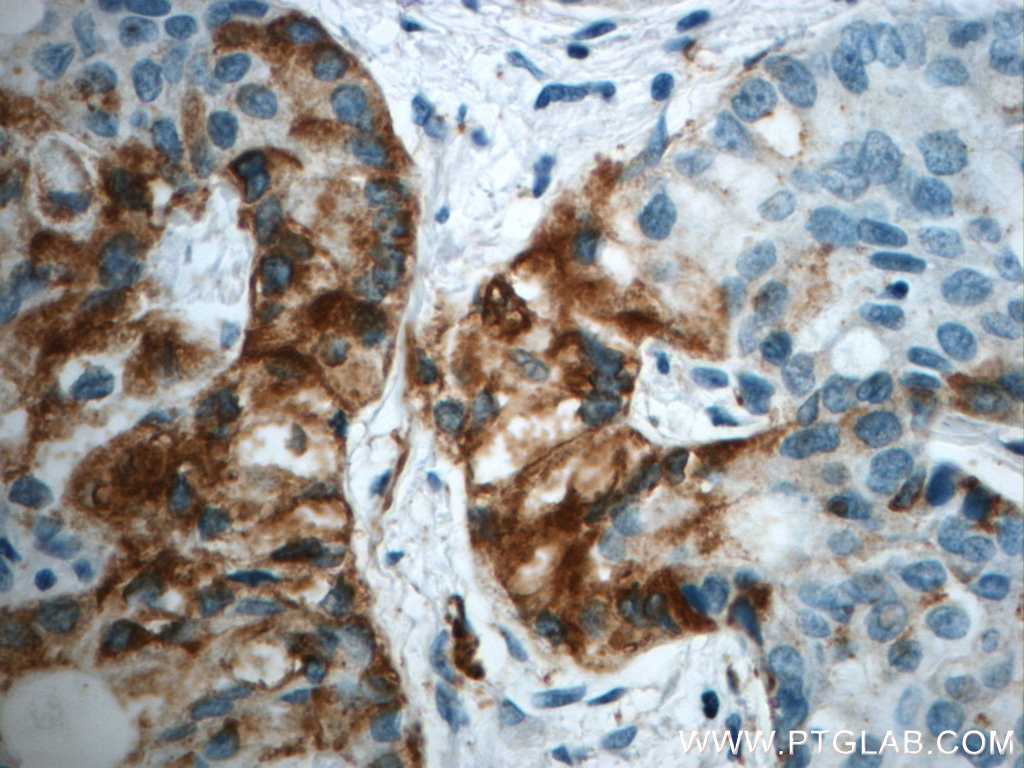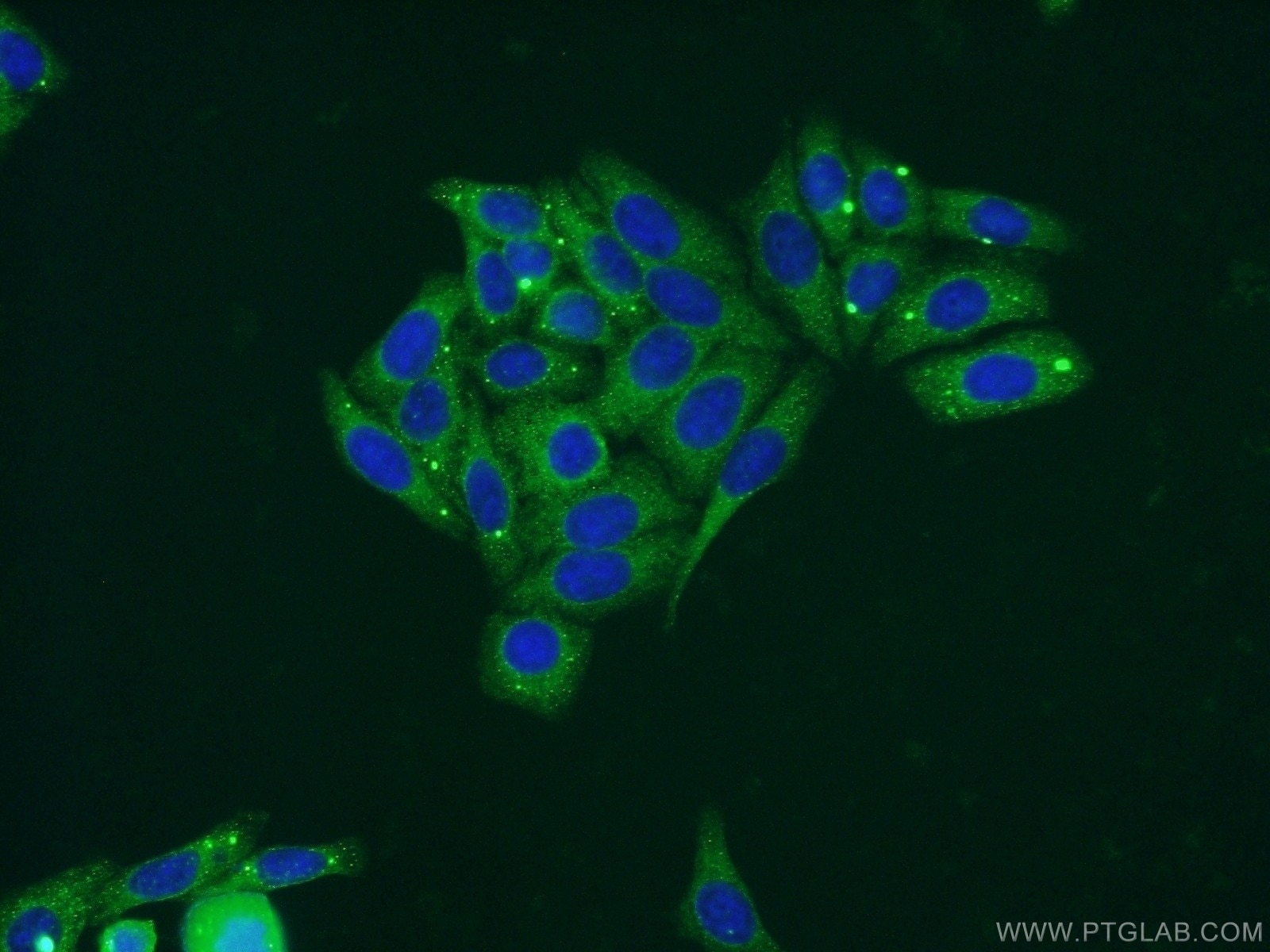- Phare
- Validé par KD/KO
Anticorps Polyclonal de lapin anti-LIPC
LIPC Polyclonal Antibody for WB, IF, IHC, ELISA
Hôte / Isotype
Lapin / IgG
Réactivité testée
Humain, rat, souris
Applications
WB, IHC, IF/ICC, ELISA
Conjugaison
Non conjugué
N° de cat : 21133-1-AP
Synonymes
Galerie de données de validation
Applications testées
| Résultats positifs en WB | tissu cardiaque de souris, cellules HepG2, tissu cardiaque de rat, tissu hépatique de souris |
| Résultats positifs en IHC | tissu de cancer du poumon humain il est suggéré de démasquer l'antigène avec un tampon de TE buffer pH 9.0; (*) À défaut, 'le démasquage de l'antigène peut être 'effectué avec un tampon citrate pH 6,0. |
| Résultats positifs en IF/ICC | cellules HepG2 |
Dilution recommandée
| Application | Dilution |
|---|---|
| Western Blot (WB) | WB : 1:1000-1:4000 |
| Immunohistochimie (IHC) | IHC : 1:20-1:200 |
| Immunofluorescence (IF)/ICC | IF/ICC : 1:20-1:200 |
| It is recommended that this reagent should be titrated in each testing system to obtain optimal results. | |
| Sample-dependent, check data in validation data gallery | |
Applications publiées
| KD/KO | See 2 publications below |
| WB | See 3 publications below |
| IHC | See 4 publications below |
Informations sur le produit
21133-1-AP cible LIPC dans les applications de WB, IHC, IF/ICC, ELISA et montre une réactivité avec des échantillons Humain, rat, souris
| Réactivité | Humain, rat, souris |
| Réactivité citée | rat, Humain, souris |
| Hôte / Isotype | Lapin / IgG |
| Clonalité | Polyclonal |
| Type | Anticorps |
| Immunogène | LIPC Protéine recombinante Ag15538 |
| Nom complet | lipase, hepatic |
| Masse moléculaire calculée | 499 aa, 56 kDa |
| Poids moléculaire observé | 65 kDa |
| Numéro d’acquisition GenBank | BC146659 |
| Symbole du gène | LIPC |
| Identification du gène (NCBI) | 3990 |
| Conjugaison | Non conjugué |
| Forme | Liquide |
| Méthode de purification | Purification par affinité contre l'antigène |
| Tampon de stockage | PBS avec azoture de sodium à 0,02 % et glycérol à 50 % pH 7,3 |
| Conditions de stockage | Stocker à -20°C. Stable pendant un an après l'expédition. L'aliquotage n'est pas nécessaire pour le stockage à -20oC Les 20ul contiennent 0,1% de BSA. |
Informations générales
LIPC, also named as HTGL and HL, belongs to the AB hydrolase superfamily and Lipase family. It has the capacity to catalyze hydrolysis of phospholipids, mono-, di-, and triglycerides, and acyl-CoA thioesters. LIPC is an important enzyme in HDL metabolism. It binds heparin.
Protocole
| Product Specific Protocols | |
|---|---|
| WB protocol for LIPC antibody 21133-1-AP | Download protocol |
| IHC protocol for LIPC antibody 21133-1-AP | Download protocol |
| IF protocol for LIPC antibody 21133-1-AP | Download protocol |
| Standard Protocols | |
|---|---|
| Click here to view our Standard Protocols |
Publications
| Species | Application | Title |
|---|---|---|
Cell Res Tissue-specific transcription reprogramming promotes liver metastasis of colorectal cancer. | ||
J Hematol Oncol High-resolution Hi-C maps highlight multiscale 3D epigenome reprogramming during pancreatic cancer metastasis.
| ||
Lab Invest Cholestasis impairs hepatic lipid storage via AMPK and CREB signaling in hepatitis B virus surface protein transgenic mice. | ||
J Transl Med Downregulation of TUSC3 promotes EMT and hepatocellular carcinoma progression through LIPC/AKT axis
| ||
Arch Pharm Res Protective effects of L-theanine on rats with dextran sulfate sodium-induced inflammatory bowel disease. | ||
Biomaterials Mitochondria targeted drug delivery system overcoming drug resistance in intrahepatic cholangiocarcinoma by reprogramming lipid metabolism |
